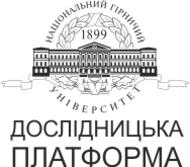№78-18
Material scientific fundamentals of the application of high-tension, high-viscus steels for special-purpose structures
D. Laukhin1, K. Ziborov1, І. Soloviov1, V. Filatov1
1Dnipro University of Technology, Dnipro, Ukraine
Coll.res.pap.nat.min.univ. 2024, 78:211–216
Full text (PDF)
https://doi.org/10.33271/crpnmu/78.211
ABSTRACT
Purpose. To develop a structural and substructural state in thick-plate rolled products made of economically microalloyed steel that ensures the required high-performance properties for modern welded metal structures of critical importance.
The methods. To achieve this purpose, methods of metallographic analysis of material structures, chemical composition analysis, and evaluation of mechanical properties were utilized, including the assessment of brittleness and susceptibility to brittle fracture at reduced testing temperatures.
Results. An analysis of the production of low-carbon steels for modern special-purpose structures was conducted. Current steels in use do not fully meet the requirements for frameworks of critical-purpose structures. Domestic thick-plate steel demonstrates significant variability in strength and plastic properties across different directions of the material's volume. For instance, strength characteristics along the rolling direction can be 1.5–2.85 times higher than those in the Z-direction. This anisotropy arises due to pronounced ferrite-pearlite banding typical of thick hot-rolled plate structures. Such structural inhomogeneities, combined with the formation of axial segregation zones, increase the risk of delamination and reduce structural reliability. Moreover, the application of steels with pronounced ferrite-pearlite banding in construction is limited due to reduced impact toughness as plate thickness increases.
The originality. The obtained results further develop the application of steels with carbonitride strengthening, considering the embrittlement coefficient. In combination with solid-solution, dislocation, and subgrain strengthening, this approach ensures a high set of properties in modern welded metal structures of critical importance along the longitudinal, transverse, and Z-directions.
Practical implementation. The application of high-strength, high-toughness, low-carbon microalloyed steels opens the possibility for constructing taller buildings and large-span bridge structures.
Keywords: low-alloy steels, controlled rolling, substructural state.
References
1. Mushchanov, V. (2022). Do analizu osnovnykh polozhen normatyvnykh dokumentiv z poperedzhennia lavynopodibnoho obvalennia konstruktsii budivel (Chastyna 1). Metalevi konstruktsii, 28(2), 63–78.
2. EN 1990:2002+A1. (2005). Eurocode. Basis of structural design. Supersedes ENV 19911:1994. This European Standard was approved by CEN on 29 November 2001. Brussels. CEN.
3. Orzhekhovskii, A. (2017). Features of the stressstrain state and reliability of designed and operated frame cantilever coatings over the stands of stadiums. (Thesis of Ph. D. in Engineering) DNACE. Makeevka.
4. DBN V.2.2242009. Design of highrise residential and public buildings. Buildings and structures: Appendix E. Methodology for calculating a high rise building for resistance to progressive collapse. Kyiv.
5. Babachenko, O., Kononenko, G., & Podolskyi1, R. (2022). Analysis of Structure of Samples of Rail Steels of the New Generation with Improved Operational Properties. МФтаНТ, 44(12), 137–156
6. Hulka, К., Bordignon, P., & Malcolm, G. (2023). Experience with low carbon HSLA steel containing 0.06 to 0.10 percent niobium. Niobium techn. Report/Summary of intern. Araxa, P. 27–49.
7. Kojima, S., Sampaio, M., & Bott, I. (2003). The development of API 5L X80 steel for pipe production by TMCR process, T&B, 1–5.
8. Verlinden, B., & Driver, J. (2007) Thermo-Mechanical Processing of Metallic Materials (1st Edition). https://shop.elsevier.com/books/thermo-mechanical-processing-of-metallic-materials/verlinden/978-0-08-044497-0
9. Abe T., Tsukada K., Kozasu I. et al. (1986). HSLA Steels: Metallurgy and Application. Metals Park: ASM-International, 103–111.
10. Anderson, Р., Hirth, J., & Lothe, J. (2017). Theory of Dislocations. https://www.cambridge.org/ua/universitypress/subjects/engineering/materials-science/theory-dislocations-3rd-edition?format=HB&isbn=9780521864367
11. Laukhin, D., Beketov, O., & Ziborov, K. (2024). Materialoznavchi osnovy polihonizatsii austenitu pry kontrolovanii prokattsi. Dnipro : NTU «DP».
12. Hezentsvei, Yu., Ziborov, K., & Laukhin, D. (2024). Tekhnolohichnist zastosuvannia dribnozernystykh termozmitsnenykh stalei v konstruktsiiakh kozhukhiv domennykh pechei. Dnipro. NTU«DP».




